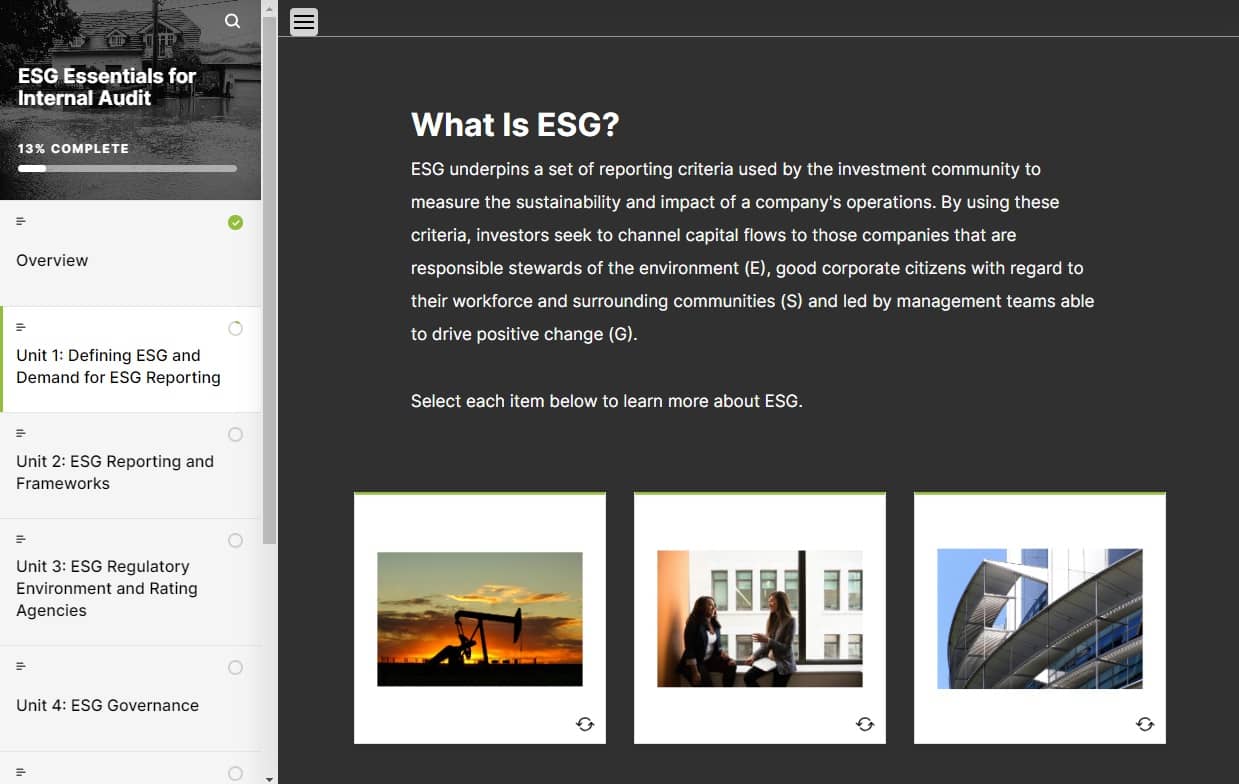Format: On-demand

There is little argument that internal audit should provide assurance on the accuracy of ESG reporting. “There are a few core reasons why this is so important,” said Jeff Sebree, director, internal audit at Cerner Corporation. “First, there’s a growing focus from the SEC from a regulatory perspective. If the SEC cares, internal audit certainly should. This is actually a large opportunity to display value to our stakeholders. Just as we’ve done with SOX and ERM activities, internal audit can be there to support assurance and really usher in the ESG reporting dynamic. There’s just a natural fit there."
As you follow current events, you will see that the pressure for companies to disclose ESG data is driven by stakeholders such as employees, consumers, activists, investors, regulators, supply chain partners, and other businesses. These stakeholders are pressuring companies to be transparent about their impact on ESG matters and to provide timely, relevant, and reliable information.
More companies are addressing these market pressures for ESG disclosures due to increasing regulations, shifts in societal expectations towards sustainability, technology enhancements, and a rise in frequency and intensity of severe weather events due to changing climate conditions.
Understanding ESG factors is crucial as they significantly influence risk management, compliance, and sustainability reporting—areas that are increasingly under scrutiny from regulators, investors, and the public. As stewards of corporate governance, internal auditors must ensure that their organizations not only comply with relevant ESG regulations, but also integrate these practices into their corporate strategy.

Learning Objective(s):
- Comprehend Environmental, Social, and Governance (ESG) principles and reporting procedures.
- Describe the most recent market trends relating to ESG.
- Understand climate change as a catalyst for ESG reporting.
- Learn about a company’s sustainability reporting journey via a case study.
- Learn about the impacts of severe weather events via a case study.
- Explain current regulations and frameworks governing ESG.
- Outline the ESG targets and commitments setting process.
- Understand ESG regulatory requirements.
- Identify ESG rating agencies and realize their methodology.
- Identify the components of a typical ESG governance structure.
- Understand internal audit’s role in supporting the ESG governance structure.
- Understand ESG data, data risks, tools, and technologies.
- Explain how internal audit can add value to your company’s ESG program.
- Connect ESG and ERM programs.